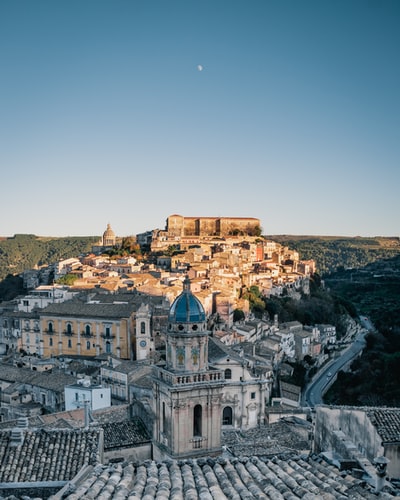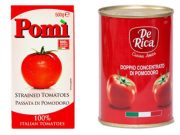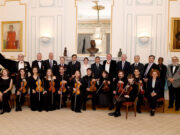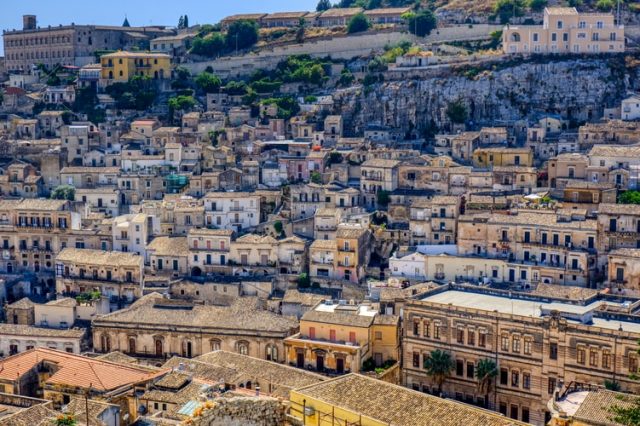One of the major tourist attractions in Sicily (and the prettiest), Ragusa Ibla is set amid the rocky peaks, northwest of Modica. It’s a fairy-tale town with labyrinths of honey hued houses, traditional trattorias and tangled medieval streets which spill onto squares of opulent baroque façades and churches.
Situated in the region of Ragusa which has three UNESCO World Heritage Sites coupled with an incredible gastronomic scene, Ragusa Ibla is a dainty town where with an infectious atmosphere. For those who know, this corner of Sicily is an artistic playground. Besotted by Sicilian baroque architecture, this legacy endures making it a hub of 18th of century piazzas, golden churches anchored by tiers of Corinthian columns.
We give you eight reasons why you should explore Ragusa Ibla and its surrounding area.
The baroque façades
After the devasting earthquake of 1693 which destroyed most of this region, the towns and cities gradually rose up from the rubble and were rebuilt with aristocratic-like architecture. Most of the architects and artists drew inspiration from the baroque tide that was already turning in Rome, and the results are astonishing. The abundance of baroque façades earned Ragusa Ibla the title of a UNESCO World heritage Site, deeming it a place of extraordinary excellence. After the earthquake Ragusa was built two baroque towns: Ragusa Superiore (on the top of the hill) and Ragusa Ibla (way down below on a rocky crest). The church of San Giuseppe was designed by Rosario Gagliardi between 1739 and 1775 and remains a beacon of Sicilian baroque.
The church of Santa Maria dell’Itria
The powder blue dome is probably the most famous image of Ragusa Ibla and with good reason. Founded by the Knights of Malta in the 17th century, Santa Maria dell’Itria has an original bell tower covered with Caltagirone ceramic tiles. Inside you can admire a canvas of San Giuliano, attributed to Mattia Preti.

Montalbano
Ragusa Ibla is the home to the much-loved Montalbano series. Many of the Vigata scenes are filmed in and around Ragusa Ibla’s Piazza Duomo, which is overshadowed by the impressive church of San Giorgio. Montalbano himself is a regular lunchtime client of Trattoria La Rusticana which poses as Trattoria San Calogero in the series. The overbearing Circolo di Conversazione, once a meeting place where the town’s gentry could chat, and drink, also features heavily in the series. The panoramic shots of Ragusa Ibla that set the scene for many of the episodes are taken from the Church of Maria delle Scale, which lies midway between Ragusa Superiore and Ragusa Ibla.
The Ibleo Garden
The recently renovated Giardino Ibleo – also called Villa Comunale – is the green plush garden of the city that overlooks the Irminio valley. Built in 1858, it covers over 15,000 square meters, containing impressive rows of palm trees and a great variety of beautiful plants and flowers- both Mediterranean and non-Mediterranean varieties. There are also three churches inside the Garden: San Domenico, the Capuchin church and San Giacomo, the latter was built on the remains of the temple of Lucina, the goddess of fertility.
The palaces
Plunging back into the atmosphere and the narrow alleys of the centre, you can see the overbearing palaces that dominated the skyline. Palazzo La Rocca features seven balconies, imposing sculptures and a wide opulent staircase. The heart of the town features the 16th century Palazzo Arezzo di Sanfilippo which houses an art nouveau gallery and the elegant Palazzo Arezzo Veninata. Palazzo Maggiore and Palazzo Majorana are also beautiful and evocative and belonged to Ragusa’s noble family.
Donnafugata Castle
Perhaps the most famous castle in the region, Donnafugata which literally means ‘the woman who fled’ is located a short distance from Ragusa, deep in the south of Sicily. A treasure box waiting to be discovered, the castle remains an extraordinary example of Royal residency. As the name Donnafugata denotes romantic connotations, the history of the castle has resulted in many myths and legends, namely that Queen Blanche of Navarre, widow of King Martin I of Aragon, was hiding from Count Bernardo Cabrera who was courting her and hid at Donnafugata Castle. Rather disappointingly, most historians agree that actually that the name of the castle derives from linguistic corruption that originated from the Arabs. What we do know is that the building was bought by the noble Arezzo – La Rocca family in 1648 and the magnificent structure was built upon extensively throughout the 17th and 20th centuries by wealthy aristocrats who called it their home. The sumptuous abode boasts more than 120 rooms with a luscious Mediterranean garden. Most of what you see today was completed during the 19th century by Sicilian politician Baron Corrado Arezzo who transformed the structure into a Neo-Gothic castle. The reason for this style was because at that time, Italian aristocracy looked to England as a leading example for architectural beauty and innovation. The baron was inspired by Hampton court and wanted to emulate Henry VIII in Sicily. In fact, he was so inspired that he decided to build a replica of the King’s aristocratic pastime- a labyrinth. Designed exactly like the one in Hampton Court but in stone rather than hedges, Corrado Arezzo was able to emulate Royal English pleasures in rural Sicily.
Modica and Scicli – the surrounding UNESCO World Heritage sites
Situated southwest of Modica, Scicli is authentic, up-and-coming, relaxed and like all other towns of the region, a showpiece of baroque style. The town makes regular cameos on the famed TV series Inspector Montalbano.
Like Ragusa, Modica too rose up from the rubble and was branded with a World Heritage status. A town famous for producing chocolate, Antica Dolceria Bonajuto is well into its sixth generation making it the oldest chocolate factory in Sicily. Being part of the Spanish kingdom meant that Sicily was one of the first recipients of food imports from South America and chocolate was left behind in Modica some 500 years ago. This union was very important in establishing the chocolate as we know today and its generally agreed that Sicily was the first to introduce sugar to chocolate. The factory still makes chocolate as they did 150 years ago when it opened.
Marina di Ragusa
If sipping on a cold beer and picking apart fresh fish right on the waterfront is your idea of a day well spent, well there’s plenty of opportunities for you to do this here. During the summer months, Italians come and spend their long summer days leisurely by this tiny medieval village port. Marina di Ragusa is one of the southernmost areas of the island and benefits from a wonderfully mid climate most of the year. Enriched with holiday homes, hotels, sandy beaches endowed with tall palm trees and restaurants on the waterfront, the port has a tangibly relaxed atmosphere. Along the port are yachts and small boats which you can rent and visit Malta for the day.






















